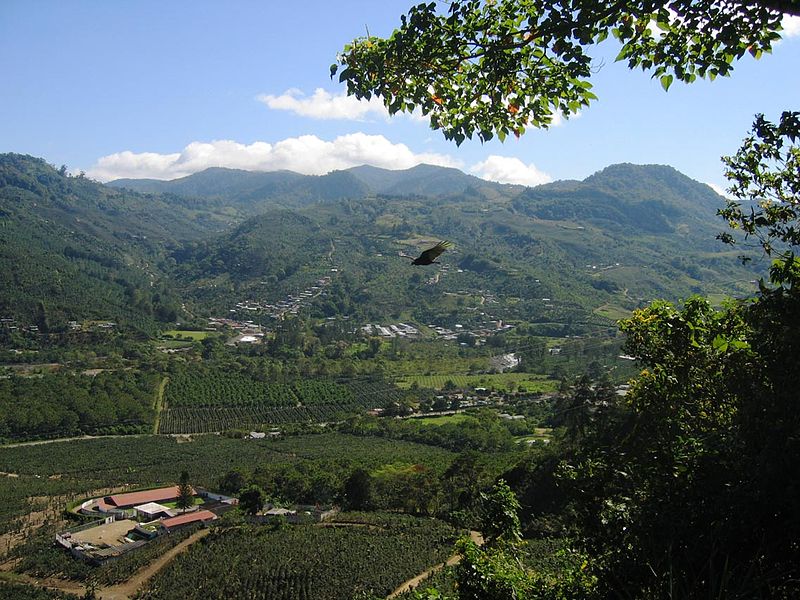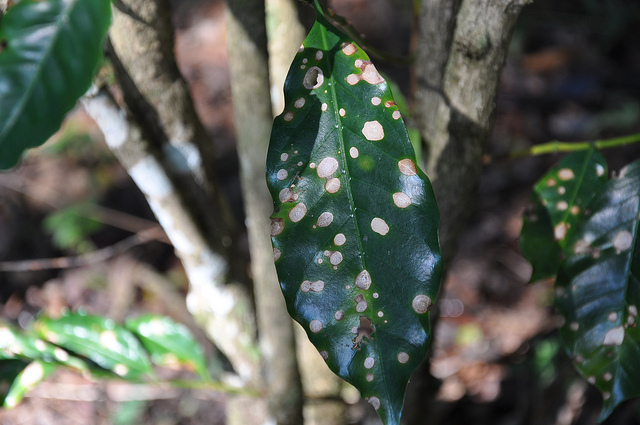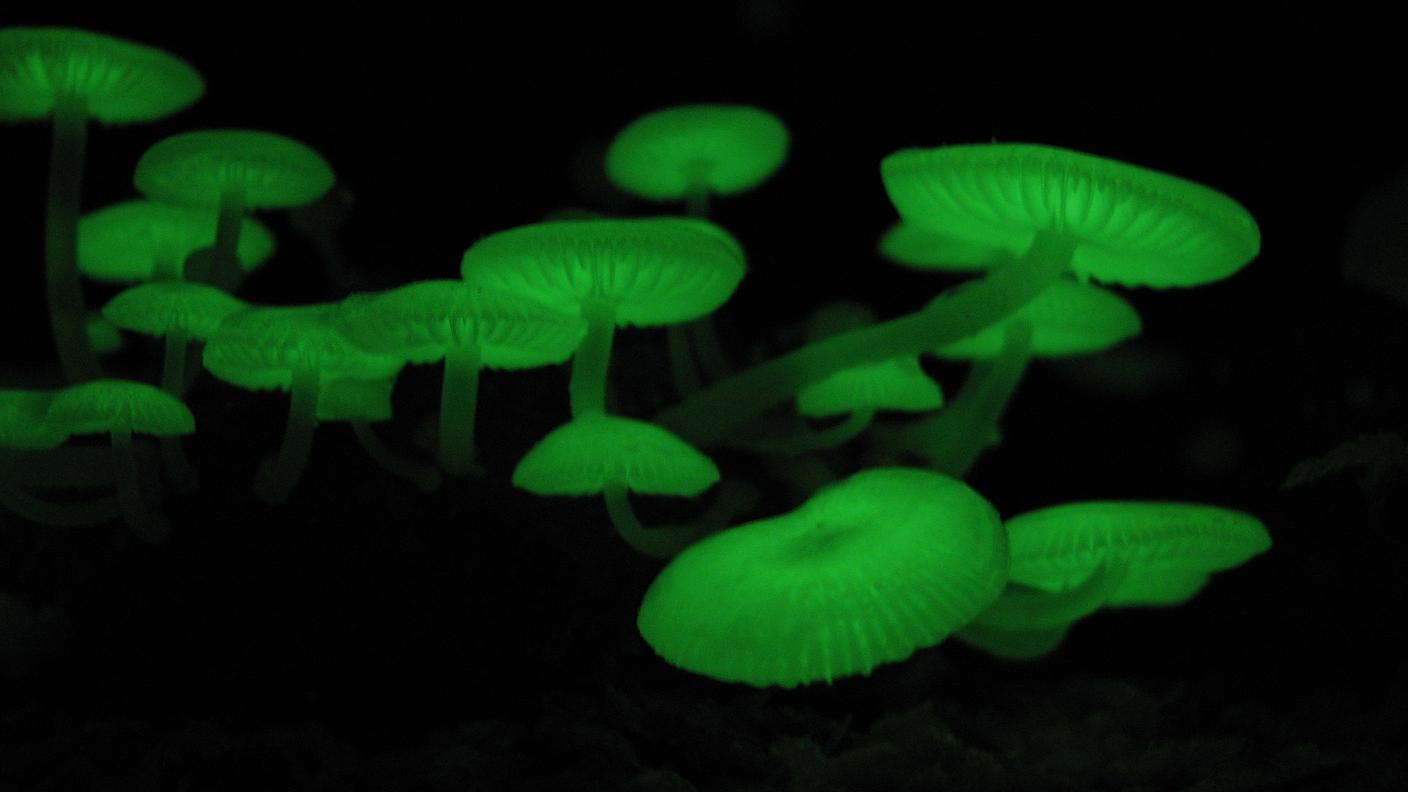Interactions
 Mycena citricolor is a plant pathogen. This is
the basidiomycete that is responsible for creating the brown
spots on the coffee leaves and is the most serious disease of
coffee plants in the Western Hemisphere (Rodrigues, C.J., Arney,
Dean). The
Ganoderma lucidum is another fungus in South America
that usually live on dead trees. However, if is on a
living tree it can act as a parasite that can kill the tree. The
Mycena citricolor
produces mushrooms on the leaves of coffee plants. The
mushrooms cause lesions on the leaves.
This affects humans that drink
coffee because this pathogen kills coffee plants. The
Mycena citricolor has the ability to destroy up to twenty
percent of the plants in this coffee plantation shown above. That is a
large amount of coffee being wasted. The
Cordyceps subsessilis
Mycena citricolor is a plant pathogen. This is
the basidiomycete that is responsible for creating the brown
spots on the coffee leaves and is the most serious disease of
coffee plants in the Western Hemisphere (Rodrigues, C.J., Arney,
Dean). The
Ganoderma lucidum is another fungus in South America
that usually live on dead trees. However, if is on a
living tree it can act as a parasite that can kill the tree. The
Mycena citricolor
produces mushrooms on the leaves of coffee plants. The
mushrooms cause lesions on the leaves.
This affects humans that drink
coffee because this pathogen kills coffee plants. The
Mycena citricolor has the ability to destroy up to twenty
percent of the plants in this coffee plantation shown above. That is a
large amount of coffee being wasted. The
Cordyceps subsessilis
Mycena citricolor releases an indoleacetic acid called IAA-oxidase that is responsible for
this fungus’s pathogenic properties (Rao, D.V., Tewari, J.P.).
This oxidase is the proposed reason that the coffee
plant’s leaves drop off before they are supposed to (Rao, D.V.,
Tewari, J.P.). The
IAA in plants is where most of the auxin activity takes place.
The auxin is essential for growth in the plant.
Its main function is cellular expansion (Sanderfoot,
Anton). The
IAA-oxidase is an extracellular enzyme that the
Mycena citricolor
releases which destroys the IAA in the plant (Rodrigues, C.J.,
Arney, Dean). This
causes the leaf to stop growing and fall off prematurely.
The presence of
Mycena citricolor on the coffee leaf caused the it to have
an increase in the uptake of oxygen.
The rate of respiration in the coffee leaf was increased
due to the mycelia respiration inside of the leaf (Rodrigues,
C.J., Arney, Dean).
The RuBisCo in the leaves of the plant cannot distinguish
between CO2 and O2.
This is a problem because the product of the reaction
created by RuBisCo using O2 a toxin to the plant.
Since the Mycena
citricolor is increasing the uptake of O2 in the
plant, the RuBisCo is using more O2 and therefore
creating more toxic products to the plant.
This will slowly kill the plant and cause the abscission
of the leaves prematurely. 
The
Mycena
citricolor in the leaf creates polyhydrate calcium oxalate
crystals.
The
oxalate acid that the
Mycena citricolor releases takes calcium away from the
plant.
This inhibits
the membrane stability and ATP synthesis in the plant that
calcium is a part of (Rao, D.V., Tewari, J.P.).
The lesions that are on the leaves contain calcium
containing crystals.
These crystals were not found outside of these areas (Rao, D.V.,
Tewari, J.P.).
The
oxalic acid released by this pathogen lowers the pH levels
inside of the leaf.
This lowering of the pH levels causes the creation of the
brownish colored lesions that we see on the coffee plant’s
leaves (Rao, D.V., Tewari, J.P.).
The lowering of the pH balance is also what brings about
the IAA- oxidase enzyme in the leaf (Rao, D.V., Tewari, J.P.).
Now that you have read some about the Interactions you can either look at the References I used in my research or go ahead to the contact me page. Or you can go back the home page.
